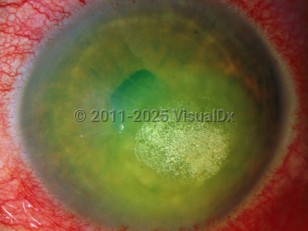Drug-induced corneal deposits - External and Internal Eye
Alerts and Notices
Important News & Links
Synopsis

Codes
H18.009 – Unspecified corneal deposit, unspecified eye
T50.905A – Adverse effect of unspecified drugs, medicaments and biological substances, initial encounter
SNOMEDCT:
418541005 – Drug-induced corneal epithlelial deposit
Look For
Subscription Required
Diagnostic Pearls
Subscription Required
Differential Diagnosis & Pitfalls

Subscription Required
Best Tests
Subscription Required
Management Pearls
Subscription Required
Therapy
Subscription Required
Drug Reaction Data
Subscription Required
References
Subscription Required

